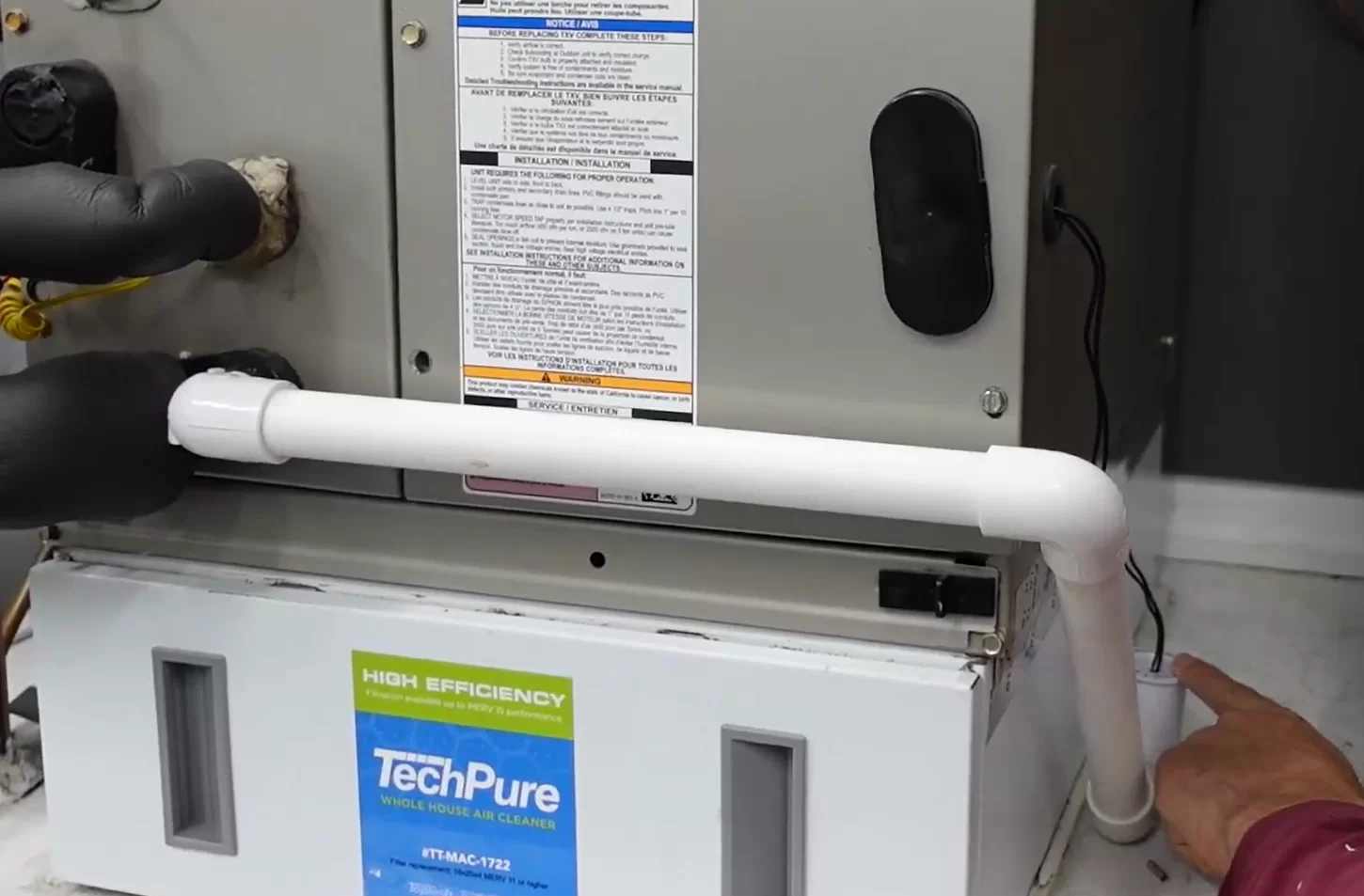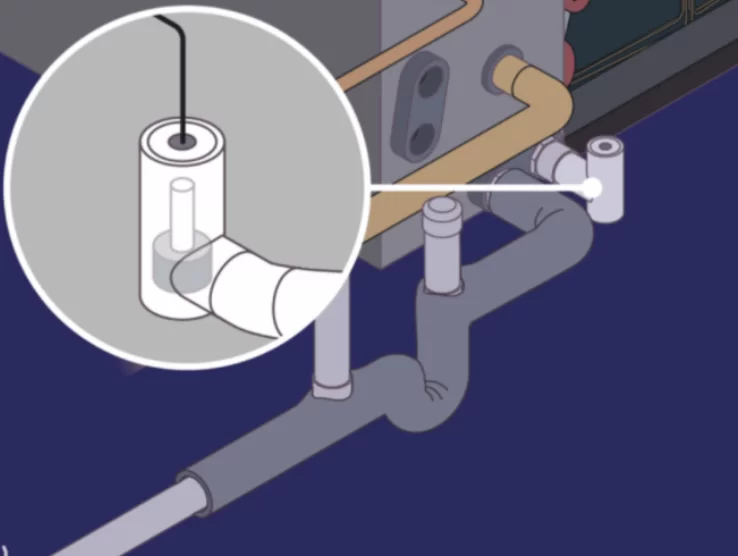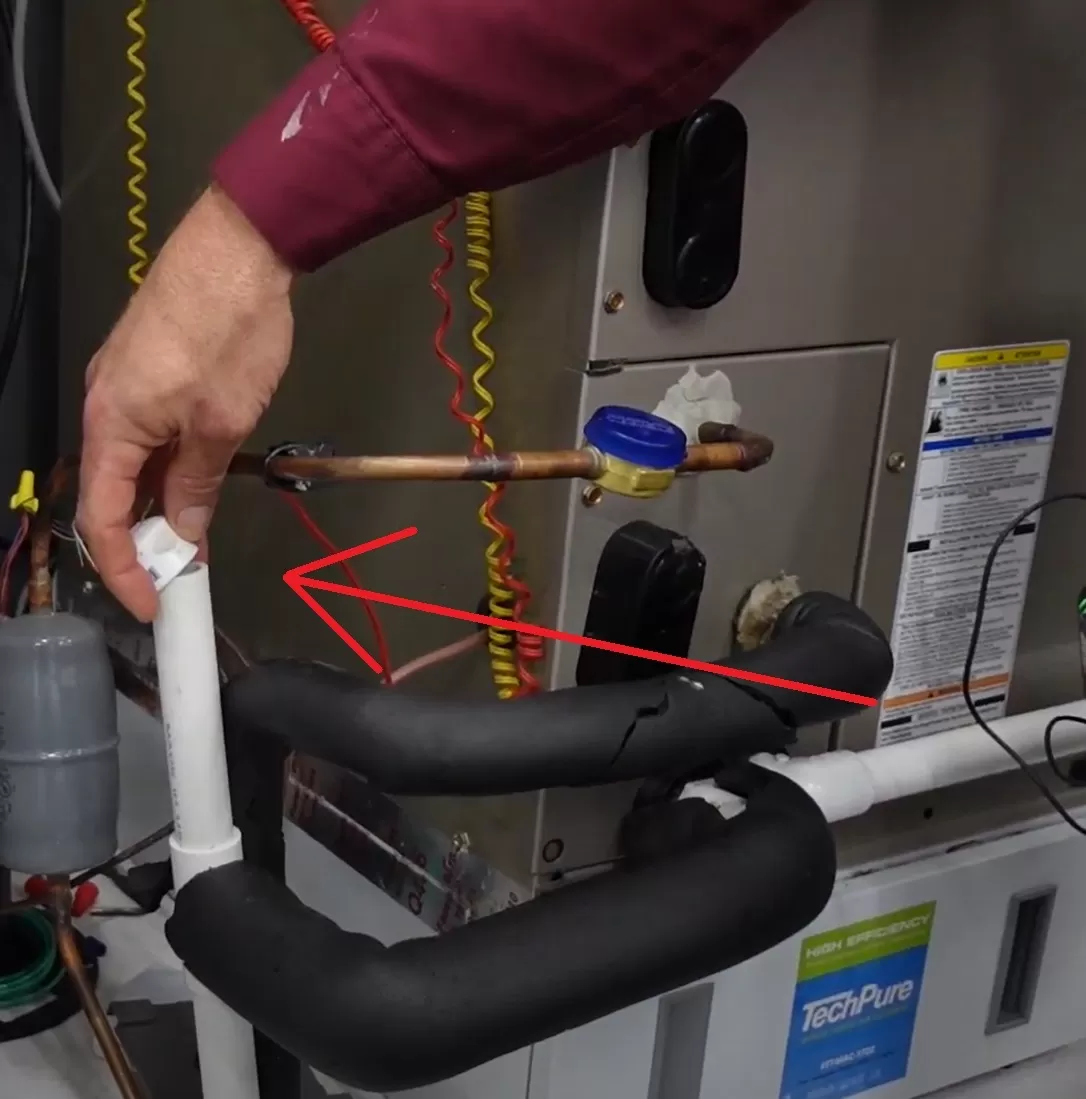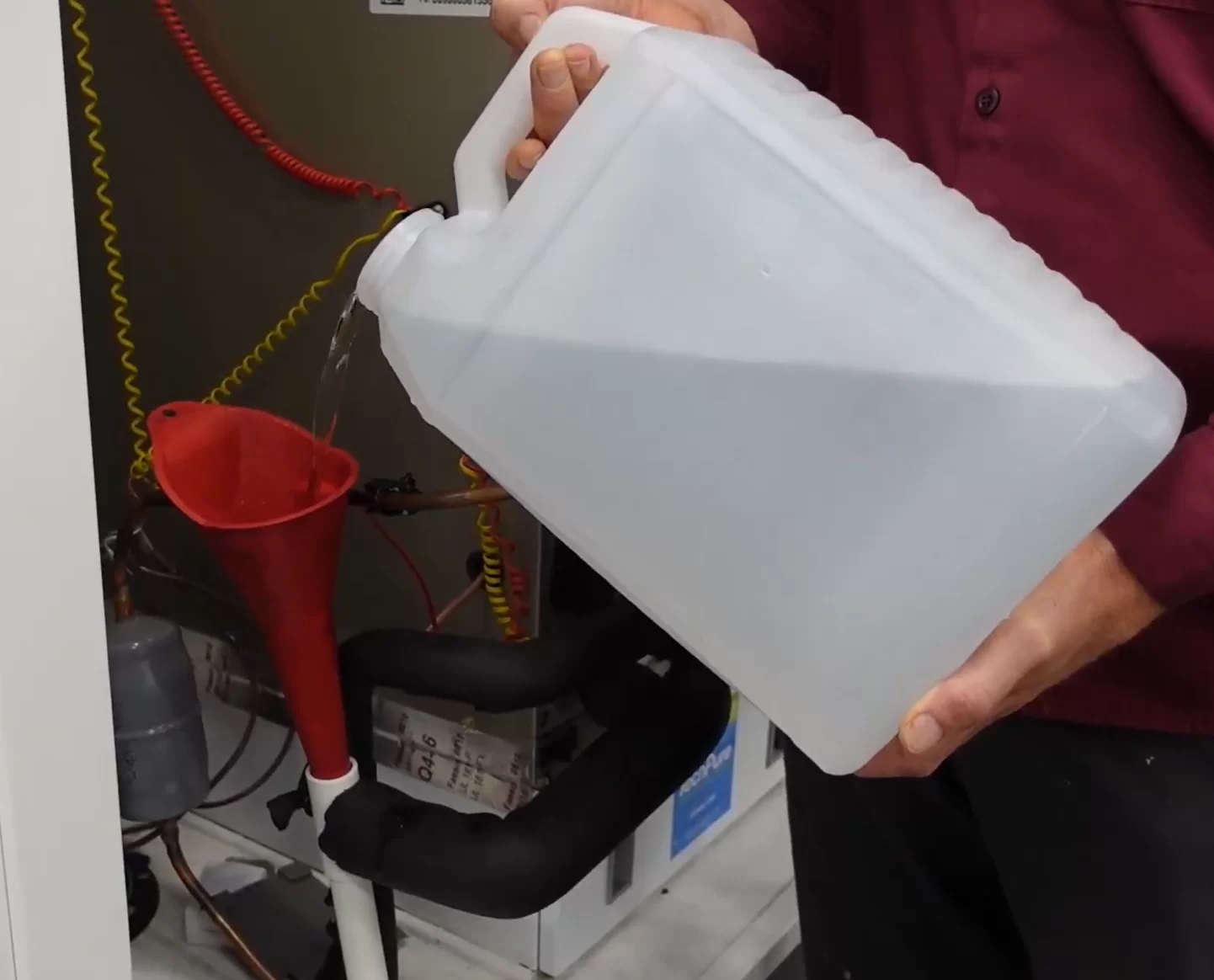Drain backups are far and away the most common A/C service calls we get. We usually get a call saying that the A/C isn’t working and the thermostat is blank. Then, when we go out and investigate the problem, we end up having to clean a drain because it's backed up.
Luckily, drain backups are often pretty easy for you to solve on your own, so you don’t need to be without A/C or pay a contractor to come out!
How do I know if my drain is the issue?
If you have a blank thermostat, the first thing you should do is check your float switch. This device will usually be located right in front of your indoor A/C unit or at the end of a downward-sloping uninsulated PVC pipe along the side. It has wires that run into the unit.

The float switch is a safety device that stops your unit from running when there’s a drain backup. A/C units produce water and are supposed to drain it to the outside—that’s why you may have a wet patch of grass near your drain outlet or see it dripping. When clogs happen, that water will back up into the unit, and it will spill over if we don’t stop it.
That’s where the float switch comes in to save the day. Its goal is to prevent the A/C unit from flooding and causing damage to your home. If there is a clog in the drain, the water is supposed to back up into the float switch before it spills over. The bottom part of the switch can move, so it floats when water fills the area beneath it. This part trips the switch and disconnects power to the unit when it reaches the top.

You can figure out if the float switch has tripped by pulling it out. If you see water in the piping where the float switch came from, you can be confident that the drain has backed up and needs attention.
What you need to clean a drain at home
Your DIY drain cleaning will need five key ingredients:
- A shop vacuum (usually range from $30–100)
- A large jug of water (preferably hot)
- A funnel
- A turkey baster (or some paper towel)
- White vinegar
Notice how bleach isn’t on the list. While bleach can definitely kill microbes and algae in your drain, the chemicals may also damage your A/C unit’s metal parts. Instead, you are better off pouring a cup or two of white vinegar into the drain monthly.
The process below will explain how to clean the drain, including opening the service port that you will use to pour vinegar and water into the drain.
How to clean a drain
1. Locate the drain outlet, which is usually near the outdoor unit, and attach a shop vacuum to the outdoor end of the drain. In many cases, the standard hose fittings won’t fit the drain, but you can seal the connection better with duct tape or a wet towel wrapped around the hose and drain.
2. Make sure the shop vacuum has power and turn it on to start sucking buildup out of the drain. The suction power alone may free the clog.
3. Pull off the service cap on the insulated PVC pipe at the indoor unit. This cap covers the cleanout or service port, which is the opening we use to pour liquid into the drain. If you can hear air flowing, that means that the vacuum has removed the clog. If not, then you may need to call a professional.

4. Using a funnel to direct the flow, pour a jug of water (preferably hot) into the service port opening. Pour about 2–3 gallons of water into the drain.

5. Once you have finished pouring water, cap the service port and shut off the shop vac outdoors. Disconnect the shop vacuum and dump out its contents in a safe location.
6. Uncap the service port again and SLOWLY pour a little bit more water into the drain without a shop vacuum attached; this is how you prime the trap of your drain, and it is a critical step.
7. Remove the water from the float switch with a turkey baster or soak it up with some paper towel to reset it. You need to get ALL of the water out of the switch.
8. Turn on your A/C unit. The thermostat should NOT be blank. However, due to a built-in time delay, it may take around five minutes for the A/C unit to begin running. Verify that it runs within five minutes.
While drains are usually quite easy for us to fix, we don’t want customers to be without air. If the method above doesn’t cut it, Kalos Services can come out and break up severe clogs using all-natural, food-safe chemicals. However, fixing your typical drain backup can be an easy DIY project that only takes a few minutes and requires only five simple, common items.




